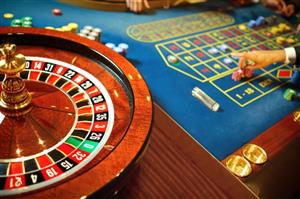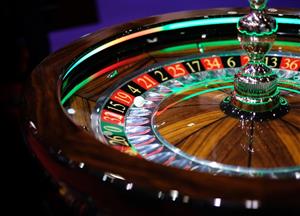D’Alembert Roulette Strategy
Learn the D'Alembert roulette strategy, how it works, and how to use it. We walk you through the A-Z of the D'Alembert strategy here.
- D’Alembert Roulette Odds
- D’Alembert Roulette System Review
- D’Alembert Roulette Success Stories
- D'Alembert Roulette Strategy FAQ
D'Alembert Roulette Strategy
We head to France again for another betting system that is centuries old. Jean le Rond d’Alembert, who lived in the 1700s, invented his own negative progression strategy that many believe evolved from the Martingale system.
Yet, unlike Martingale, the D’Alembert roulette strategy has a much flatter progression structure, making it far safer to use. It doesn’t cripple your bankroll as quickly (compared to Martingale) when on a losing streak, and it also takes longer for you to hit the maximum bet limit on the table. For these reasons, you will find many supporters of the D’Alembert roulette strategy and plenty of players still using it (or a modified version of) today.
D’Alembert Roulette Odds
The magic of D’Alembert is how simple it is. When playing roulette in a land-based casino, there are a host of distractions which can take your mind off the game. Playing online roulette is more subdued but the pace is a lot faster. Therefore, having a roulette strategy that is easy to use is imperative. D’Alembert is that strategy.
So, how exactly does it work and what are the D’Alembert roulette odds? With this being a negative progression betting system, you must increase your stake after losing bets. Whereas the classic Martingale utilises a ‘double your stake’ method, the D’Alembert only increases it by one unit. (see table below).
Therefore, first things first. You must decide upon the value of one betting unit. It could be £0.10, £0.50, £1, £5, £10 or higher. Don’t set it too high though because you will still have losing streaks and although the increase in wager sizes is not as dramatic as Martingale, it stills adds up.
For this example, we’ll set the base bet at £1 in the table below. After a losing spin, you increase the wager on the next by one unit. When you win you decrease by one unit for the following round.
| No. of spins | 1 | 2 | 3 | 4 | 5 | 6 | 7 | 8 | 9 | 10 | 11 |
|---|---|---|---|---|---|---|---|---|---|---|---|
| Stake Amount | 1 | 2 | 3 | 4 | 3 | 2 | 3 | 2 | 3 | 4 | 3 |
| Win / Lose | L | L | L | W | W | L | W | L | L | W | W |
| Profit / Loss | -1 | -3 | -6 | -2 | 1 | -1 | 2 | 0 | -3 | 1 | 4 |
You can see, that getting only 1 win does not put you back in profit (spin 4 and we are still -2). Yet, over the course of 11 spins, from which we win 5, we ended up with a reasonable £4 profit.
Example 2 (below) uses the same parameters but the win/lose sequence is in a different order. Here we did not have any consecutive wins, but once again returned a profit.
No. of spins
| No. of spins | 1 | 2 | 3 | 4 | 5 | 6 | 7 | 8 | 9 | 10 | 11 |
|---|---|---|---|---|---|---|---|---|---|---|---|
| Stake Amount | 1 | 1 | 2 | 3 | 2 | 3 | 4 | 3 | 4 | 3 | 4 |
| Win / Lose | W | L | L | W | L | L | W | L | W | L | W |
| Profit / Loss | 1 | 0 | -2 | 1 | -1 | -4 | 0 | -3 | 1 | -2 | 2 |
In both examples provided, we won 5 rounds, which is 45%. That is lower than the lifetime win probability of European roulette (48.7%). However, the results from a single session of play are often wildly different. You’ll have good days and bad days. Below is how much you would lose if/when you hit a major losing streak.
| No. of spins | 1 | 2 | 3 | 4 | 5 | 6 | 7 | 8 | 9 | 10 | 11 |
|---|---|---|---|---|---|---|---|---|---|---|---|
| Stake Amount | 1 | 2 | 3 | 4 | 5 | 6 | 7 | 8 | 9 | 10 | 11 |
| Win / Lose | L | L | L | L | L | L | L | L | L | L | L |
| Profit / Loss | -1 | -3 | -6 | -10 | -15 | -21 | -28 | -37 | -48 | -58 | -69 |
D’Alembert Roulette System Review
It’s recommended, from our D’Alembert roulette system review analyst, that you stick to even money bets. These are the outside bets such as odd/even, red/black and hi/lo. This strategy doesn’t alter the house edge - none of them do - but in comparison to the risky Martingale, the steady progression is more suitable.
For example, losing 10 consecutive £1 games under D’Alembert rules put you at -£58 total loss plus you would need £11 for the next stake. The same scenario with Martingale shows a -£1023 total loss and £1024 required for the next bet. Of course, the flip side is if you win the 11th spin, Martingale shows a profit of £1 whereas the D’Alembert is still -£47 in arrears. This is the main weakness we discovered in this D’Alembert roulette strategy review. If you do, and it will happen, go on a long losing streak, it can be difficult to recover from.
D’Alembert Roulette Success Stories
Everyone loves to hear about players bringing down the house, and there is no shortage of D’Alembert roulette success stories to choose from.
You will find that some online roulette players have used the D’Alembert straight out of the box, as we have described it above. Others have tweaked it a little to tailor the strategy more to their own style of play.
An interesting concept is to complete the cycle after a win - thus resetting your betting unit back to the base amount.
| No. of spins | 1 | 2 | 3 | 4 | 5 | 6 | 7 | 8 | 9 | 10 | 11 |
|---|---|---|---|---|---|---|---|---|---|---|---|
| Stake Amount | 1 | 2 | 3 | 1 | 2 | 1 | 2 | 1 | 1 | 2 | 3 |
| Win / Lose | L | L | W | L | W | L | W | W | L | L | W |
| Profit / Loss | -1 | -3 | 0 | -1 | 1 | 0 | 2 | 3 | 2 | 0 | 3 |
It works reasonably well but this can be dangerous if you lose five or six games in a row. The drop back to one betting unit won’t help recoup the previous losses
If you’re a total beginner, the D’Alembert roulette strategy is certainly one of the best you can start with. It’s very easy to remember - add 1 if you lose, subtract 1 if you win. It rarely infringes upon the maximum betting limit of the table, and you don’t need such a large bankroll to get up and running.
Still, consider that no roulette strategy is bulletproof. If you want to win a roulette, you need to buy a casino. You will have success using D’Alembert in short sessions of play - but you will also get burnt on a few occasions, too. Set yourself limits for how much you would like to win and how much you are prepared to lose and stick to them. Being a disciplined player is better than being lucky in the long term.
D'Alembert Roulette Strategy FAQ
Does D'Alembert only work on roulette?
No - the strategy can also be applied to baccarat and even blackjack.
Is D'Alembert a high risk strategy?
It can be a high risk strategy if you lose successively. With every loss, you will need to bump your wagers. And back to back losses can make this pricey.
Who invented the D'Alelmbert betting system?
Jean le Rond d’Alembert (16 November 1717 – 29 October 1783) created the negative progression strategy in the 17th century.









